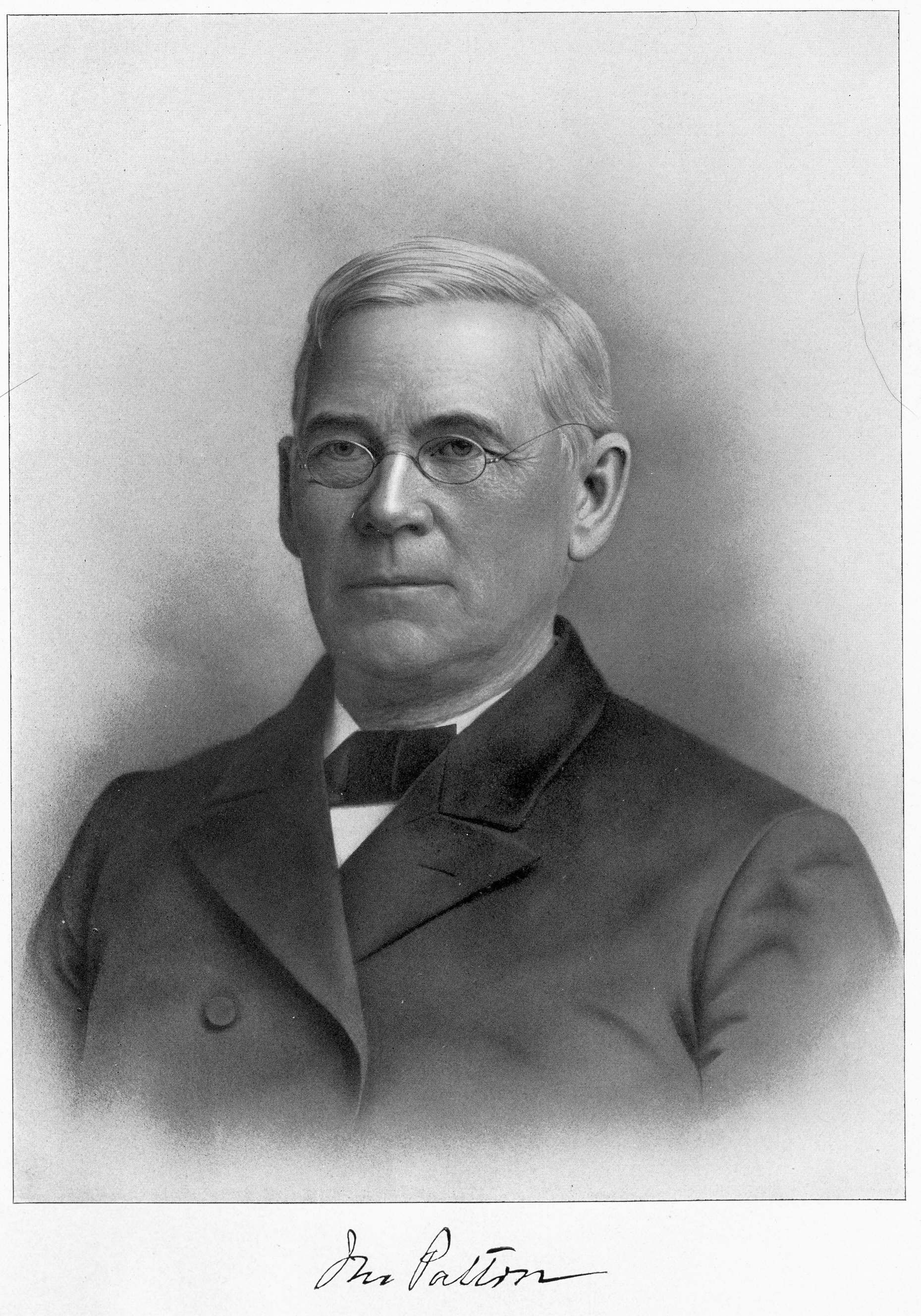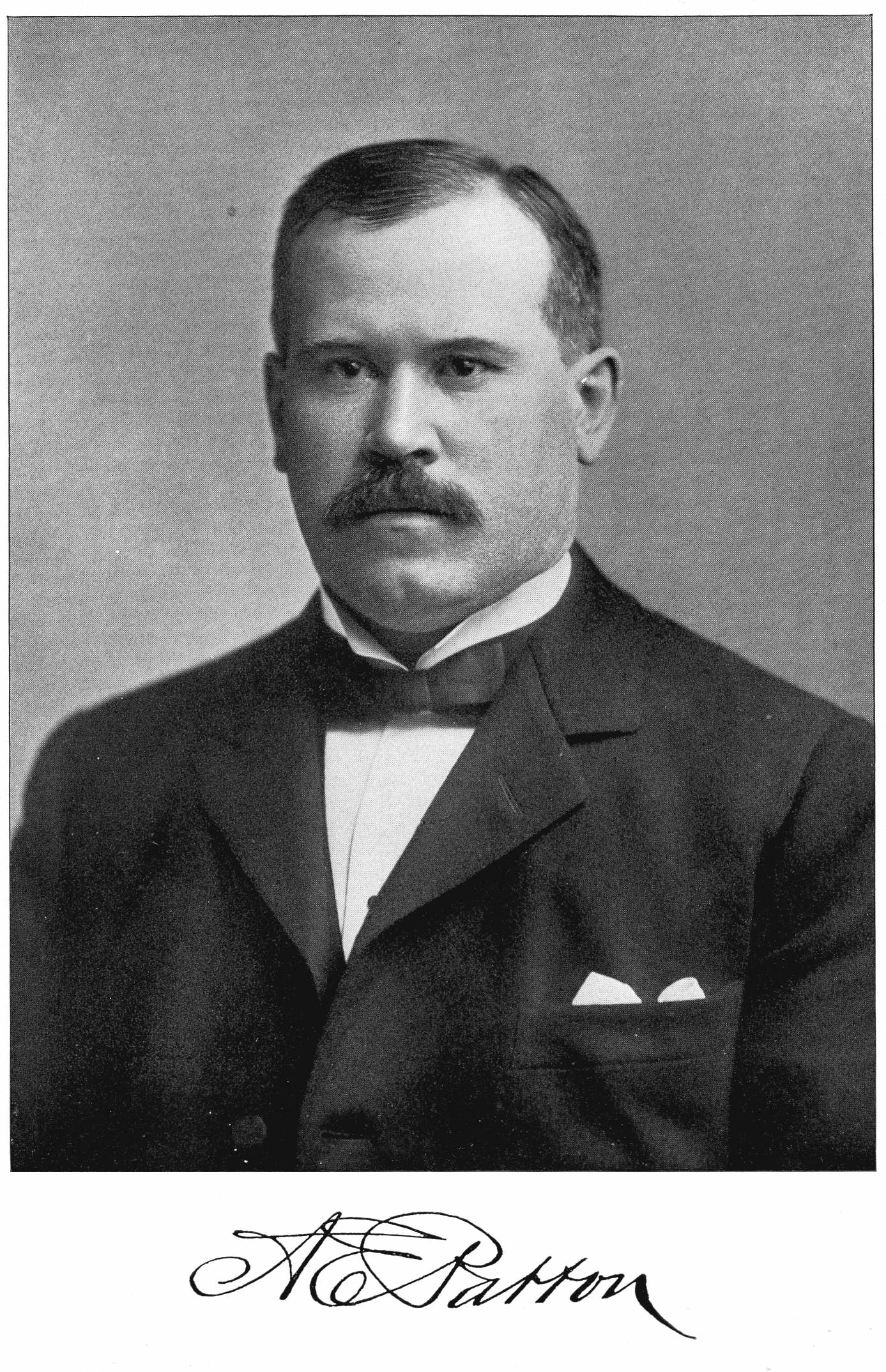Husband Hon. John Patton 1 2

AKA: Gen. John Patton 3
Born: 6 Jan 1823 - Tioga Co, PA 4
Christened:
Died:
Buried:
Father: Capt. John Patton (1783-1848) 1 5 6 7
Mother: Susan Antes (1791-1883) 1 3 6
Marriage: 17 Jun 1847 8
Other Spouse: Honora Jane Foley ( - ) 8 9 10 - 18 Jun 1858 8
Wife Catharine M. Ennis 8 9
AKA: Catharine M. Cunes 10
Born:
Christened:
Died: 28 Nov 1855 8 10 11
Buried:
Father: Alexander Ennis ( - ) 11
Mother:
Children
1 M William I. Patton 11
Born: Abt 1848
Christened:
Died: 1856 11
Buried:
Spouse: Did Not Marry
2 M John Patton, Jr. 10 11
Born: 30 Oct 1850 - Curwensville, Clearfield Co, PA 10
Christened:
Died: 24 May 1907 - Grand Rapids, Kent Co, MI 10
Buried:
3 M Alexander E. Patton 12

Born: 20 Oct 1852 - Curwensville, Clearfield Co, PA 13
Christened:
Died:
Buried:
Spouse: Mary T. Wright ( -1884) 14
Marr: 27 Dec 1875 14
Spouse: Mary B. Dill ( - ) 14
Marr: 17 Oct 1888 14
4 F Susan Patton 11
Born:
Christened:
Died: in infancy
Buried:
Spouse: Did Not Marry
General Notes: Husband - Hon. John Patton
His educational advantages, owing to the want of facilities and the necessities of his situation, were very limited, and he received his training at the school of adversity, from which he graduated with honor. Emphatically a self-made man, he never made the mistake of worshiping the maker or forgetting the day of small things, but modesty was always one of his leading characteristics, and his desire to furnish those advantages to others which were denied him, dotted the pathway of his life with benefactions to the cause of education, and enrolled his name among the philanthropists of the state.
At the age of eleven, he was errand boy in a store at Curwensville, Clearfield County, Pennsylvania, and in 1844 he commenced business for himself as a lumberman and merchant (with borrowed capital), which he continued with few interruptions for a period of over fifty years. It is a notable fact, and one which testifies to his high character and business reputation, that he was able at that time to borrow all the capital required. His comprehensive and active intellect quickly grasped the situation, and, seeing the possibility of widening the scope of his operations profitably, he pushed his far-sighted plans to completion, developing his trade until he became known as one of the leading merchants and most extensive shippers of lumber in that section. Until the spring of 1861 he devoted his time to these lines of business, but political duties then took his attention.
In 1864 he organized the First National Bank of Curwensville with a capital of $100,000, and was chosen president of the institution. In 1876 this bank closed out its business and Mr. Patton established in its place the Curwensville Bank, a private institution with a capital of $50,000. The capital later became $200,000, with a surplus of $50,000, and it was one of the strongest financial institutions of the state. In his financial operations, which after 1864 included nearly every form of investment, Mr. Patton showed singular acumen, his judgment proving superior to that of many of his associates, even those who, being at the time older and more experienced than he, might have been supposed to know more of the devious ways of finance.
His early and effective aid in securing railroads, by which the region was brought in connection with outside markets, should be especially noted. He was one of the promoters of the railroad from Tyrone to Philipsburg, and later took a leading part in securing an extension from Clearfield to Curwensville. His donation to the work was most liberal, and in this way, and through his influence with others, the sum of $60,000 was promptly raised, paid to the Pennsylvania R. R. Co. as a bonus, assuring at once the completion of the project.
In the wider activities of political and philanthropic work his name was equally well known. As a Whig in early life and later as a Republican, he wielded wide influence. In 1852 he was a delegate to the Whig National Convention at Baltimore, at which Gen. Scott was nominated for the Presidency, and in 1860 he was a member of the convention which made Abraham Lincoln the standard bearer of the Republican party. In 1860 he was chosen to represent the Twenty-fourth District in the XXXVIIth Congress, overcoming an adverse majority in the district, and carrying his county, previously a Democratic stronghold, by a gratifying vote. During the troublous times that followed, he was one of the firmest supporters of the government, every measure looking to the vigorous enforcement of national power, the abolition of slavery, the upholding of the public credit, and the care of the gallant boys who were risking their lives at the front, receiving his zealous attention. He declined a re-nomination, although the Twenty-fourth District had been changed, and was then strongly Republican. In 1886, however, he was elected to the Lth Congress from the Twentieth District, comprising Centre, Clearfield, Clinton, Elk, Union and Mifflin counties, in the face of an adverse majority of nearly three thousand. At many State conventions he was a leading figure, and in 1864 he was one of the Presidential electors who placed Lincoln at the helm of the government for the second time. On Mr. Patton's motion all the members of that Electoral College donated their per diem and mileage to the United States Christian Commission, to which, together with the Sanitary Commission, Mr. Patton had been from their organization a generous contributor. His contribution that year was five thousand dollars.
In the work which made the Centennial Exposition a success, Mr. Patton was also prominent, having been named in the act of Congress which selected the board of finance. With his customary breadth of view he saw the possibilities of this great undertaking, and gave his influence to the fullest realization of them, voting for the building of the Memorial Hall, and for the proper representation of Pennsylvania. In any measure for internal improvement he was a judicious and powerful helper, giving freely himself, and gaining through his influence the support of others who relied upon his good judgment.
All religious denominations received liberal and timely aid as occasion arose, but to the Methodist Episcopal Church he was especially helpful. He contributed largely to the cost of the building of the Methodist Episcopal Church at Curwensville, which is the finest church edifice in the locality. He was a generous patron of the educational institutions under Methodist control, notably Drew Seminary, Madison, New Jersey; Dickinson College, Carlisle, Pennsylvania; and Dickinson Seminary, Williamsport. He represented the Central Pennsylvania Conference in the General Conference at New York in 1872, and at Cleveland, Ohio, in 1896, and was also a member of the Ecumenical Conference held in Washington, D. C. Among the monuments which will stand for him is the "Patton Public Graded School" building at Curwensville, costing $25,000, which he presented to the borough, and when being asked why he did it he replied: "That no boy who desires an education need be deprived (as I was) of the opportunity." [CBRCP-CCJC, 547]